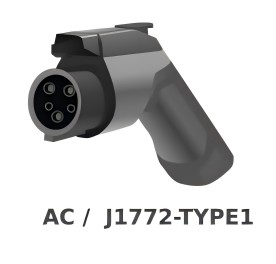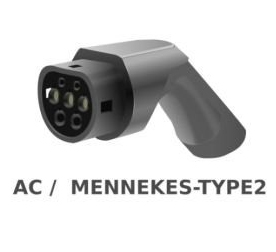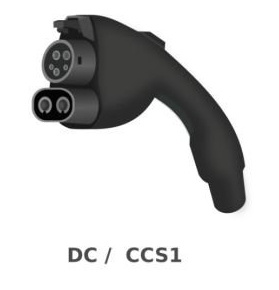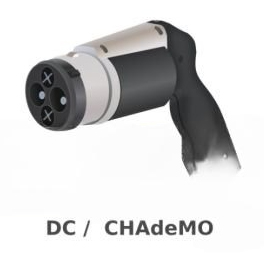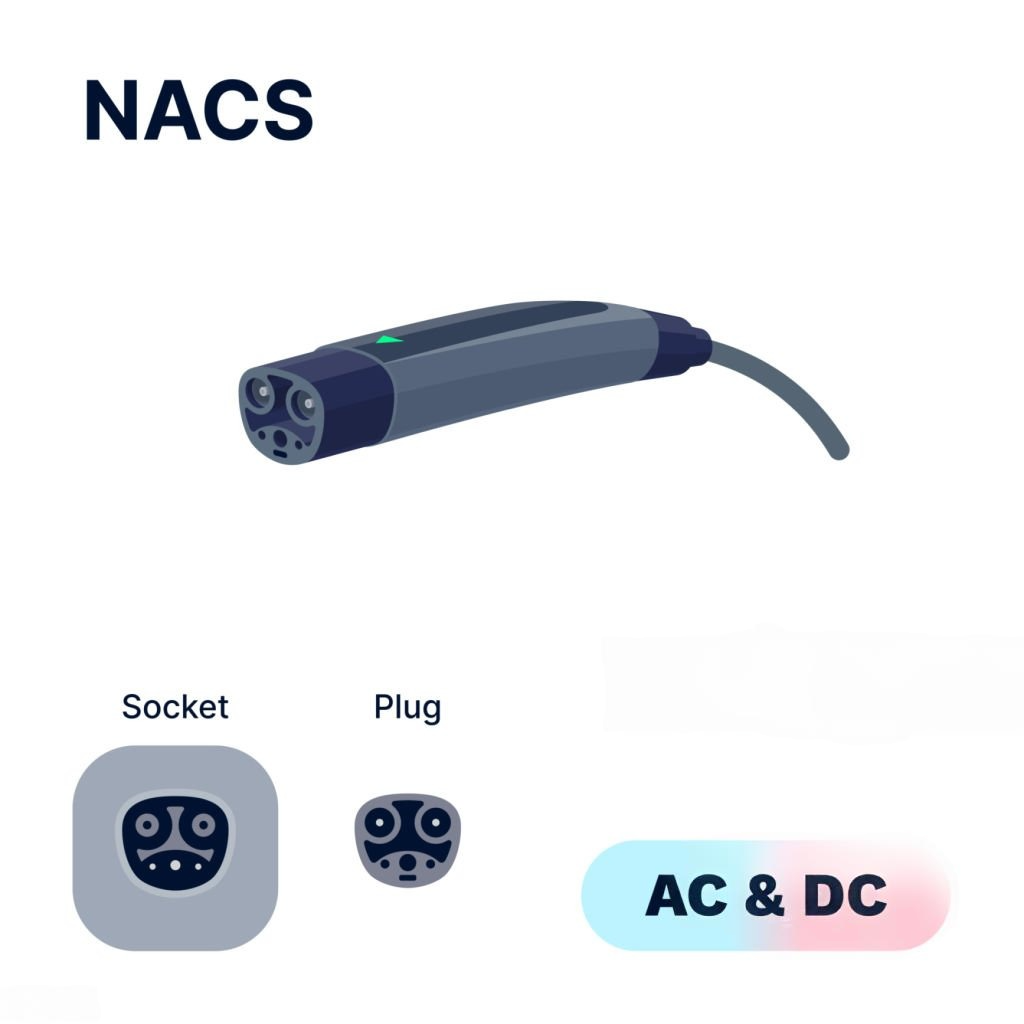Electric Vehicle Charging is evolving rapidly, so it’s essential to stay informed. The market for EV chargers is projected to expand from $10.14 billion in 2024 to $12.64 billion in 2025, marking a significant 24.6% annual growth. As demand increases, more consumers are seeking faster and more efficient chargers. Additionally, new ultra-fast charging technology is advancing quickly, with the ultra-fast charger market expected to grow by 17.3% during this period. Improvements in EV batteries are also noteworthy, with a projected 30% increase in energy capacity over the next five years. This advancement translates to shorter charging times and greater convenience. Being knowledgeable about the right chargers and connectors will be crucial in 2025, and companies like winpowercable are at the forefront of these innovations.
Key Takeaways
- Electric car charging is changing fast and growing quickly by 2025. Learn about new charging tools to stay updated.
- There are different charging speeds: slow, fast, rapid, and ultra-rapid. Pick the right one for home or long trips.
- Check your car’s connector type. It must match for proper charging. Use adapters if needed to fit newer chargers.
- More public chargers are being added, making them easier to find. Use apps to locate chargers and see if they are free.
- In the future, charging will be easier with universal plugs and wireless charging. This will make charging simpler and more convenient.
EV Charging Speeds Overview
Slow Charging (Up to 6kW)
Slow charging is the simplest way to charge an EV. It uses a regular home outlet or a basic slow charger. This method works well for charging overnight at home. It provides steady power and is reliable. Installing slow chargers is cheap and easy. They also use less electricity, making them eco-friendly for homes.
But slow charging has downsides. It takes a long time to fully charge an EV. This might not work for people with tight schedules or long drives. For example, charging a dead battery can take 12 hours or more. While great for home use, it’s not ideal for public places where parking is short and chargers are busy.
| Pros of Slow Charging | Cons of Slow Charging |
|---|---|
| Cheap and easy for home use | Takes a long time |
| Uses less electricity | Not good for long trips |
| Easy to set up | Not practical in public spots |
Fast Charging (7kW to 22kW)
Fast charging is much quicker than slow charging. You’ll find these chargers at homes, offices, and public places. A 7kW charger can fully charge your EV overnight. An 11kW charger is faster and often used in workplaces. The 22kW chargers are even quicker, perfect for businesses or public areas.
Fast chargers work with many EVs. They balance speed and cost, making them popular. But they still take a few hours to fully charge, depending on your EV’s battery size and the charger’s power.
| Charger Type | Power Output | Charging Speed |
|---|---|---|
| 7 kW (Home Charging Station) | 7 kW | Full charge overnight |
| 11 kW (Public AC Charging) | 11 kW | Faster, common in workplaces |
| 22 kW (High-Power AC Charging) | 22 kW | Great for businesses, saves time |
Rapid Charging (50kW DC)
Rapid charging, or level 3 charging, is super fast. These chargers use direct current (DC) to deliver power at 50kW or more. With rapid chargers, you can charge up to 80% in 30-40 minutes. This makes them great for long trips or busy days.
Today, average DC fast chargers deliver 150kW, cutting charging time even more. Rapid chargers are growing in public networks worldwide. For example, China saw a 50% rise in fast charger installations in 2021. This shows the growing need for quick charging.
Rapid chargers are perfect for quick stops but need special setups. They also cost more than slower chargers. Still, their speed and ease make them a key part of the EV world.
Tip: Use rapid chargers for road trips or quick charges when busy.
Ultra-Rapid Charging (100kW and Above)
Ultra-rapid charging is the fastest way to charge EVs. These chargers provide power at 100kW or more. They can charge an EV battery to 80% in just 15-20 minutes. This makes them great for busy people, long trips, or when time is short.
These chargers use advanced DC fast charging to work quickly. They skip the car’s converter and send power straight to the battery. This saves a lot of time. You’ll see these chargers at highways, city centers, and busy spots where fast charging is needed.
Note: Ultra-rapid chargers are best for EVs with big batteries. These cars can handle high power without overheating or damage.
Ultra-rapid charging is very convenient but has some downsides. These chargers need special setups, which cost more to install and maintain. Also, not all EVs can use ultra-rapid chargers. Check if your car supports this type of charging before using one.
| Feature | Details |
|---|---|
| Power Output | 100kW or more |
| Charging Time | 15-20 minutes for 80% charge |
| Ideal Locations | Highways, city centers, busy spots |
| Compatibility Requirement | EVs that support ultra-rapid charging |
Ultra-rapid chargers are changing how we charge EVs. They make charging faster and easier for today’s drivers. As more people drive EVs, these chargers will become common in public places worldwide.
Knowing about EV charging connectors helps make charging easier. Different connectors work for various charging speeds and car types.
Type 1 Connectors
Type 1 connectors, called SAE J1772, are used in older EVs. They support Level 1 and Level 2 charging. These are good for home and public AC chargers. With five pins, they handle up to 80 amps at 240 volts. They are dependable but are being replaced by newer options like Type 2 and CCS.
| Feature | Type 1 Connector (SAE J1772) | Other Connectors (Type 2, CCS) |
|---|---|---|
| Design | Five-pin | Varies (e.g., seven-pin for Type 2) |
| Maximum Charging Capacity | 80 amps | Higher for CCS (up to 350 kW) |
| Voltage Input | 240 volts | Varies (e.g., Type 2 supports up to 400 volts) |
| Charging Levels | Level 1 and Level 2 | Level 1, Level 2, and DC fast charging for CCS |
Tip: If your EV uses Type 1, get an adapter. This allows faster charging with newer connectors.
Type 2 Connectors
Type 2 connectors are common in modern EVs, especially in Europe. They work with single-phase and three-phase systems. This allows faster AC charging up to 22 kW. These connectors are used at homes, offices, and public stations. They also pair with CCS for fast DC charging.
- In 2024, 70.4% of AC chargers in Europe used Type 2.
- They have safety shutters to avoid accidental contact.
- Most EVs can use them, making charging stress-free.
CCS (Combined Charging System)
CCS connectors combine Type 2 features with extra pins for DC charging. This lets you use one plug for both AC and DC charging. CCS supports very fast charging, up to 350 kW. It’s popular for new EVs and public chargers.
Note: CCS is becoming the main standard for EV charging worldwide.
CHAdeMO
CHAdeMO is one of the first fast charging types. It is popular in Asia and some parts of Europe. The name means “Charge de Move,” showing its goal of quick EV charging. This connector uses DC power and can charge up to 62.5 kW. It works well for fast charging and is common in public places. In Japan, CHAdeMO is still a top choice for EV drivers.
Japan has spent a lot on CHAdeMO chargers. By mid-2023, there were over 25,000 CHAdeMO chargers in the country. This helps reduce worries about running out of battery. Governments in Japan and France also gave money to support EVs. For example, France saw a 20% rise in EV sales due to subsidies. These actions show how important good charging networks are for EV growth.
| Factor | Description |
|---|---|
| Infrastructure Investment | Japan added over 25,000 CHAdeMO chargers by mid-2023, helping EV drivers feel secure. |
| Government Incentives | Subsidies in Japan and France boosted EV sales, like a 20% rise in France. |
| Technological Developments | Faster charging (up to 62.5 kW) made CHAdeMO more user-friendly. |
| Market Dynamics | Japan sticks with CHAdeMO, but CCS and Tesla are growing elsewhere. |
| Consumer Awareness | 65% of EV buyers prefer brands with strong CHAdeMO networks. |
Still, CHAdeMO has problems. Newer systems like CCS and Tesla’s plug are faster and work with more cars. While CHAdeMO is reliable, its future depends on how it keeps up with changes in the EV world.
Tesla-Specific Connectors
Tesla connectors, called NACS (North American Charging Standard), are made just for Tesla cars. They let Tesla owners charge easily at Supercharger stations. These chargers are very fast, with speeds over 250 kW. This makes long trips easier and quicker.
Tesla connectors are simple to use. You don’t need extra adapters at Tesla chargers, which saves time. Tesla also updates its system to stay ready for new technology. This keeps Tesla cars prepared for future charging improvements.
| Feature | Tesla NACS | Universal J1772 |
|---|---|---|
| Charging Speed | Very fast with Superchargers | Slower than Tesla NACS |
| Compatibility | Only works with Tesla cars | Works with many EV brands |
| User Experience | Easy to use, no adapters needed | Needs adapters for Tesla chargers |
| Future-Proofing | Updated for new tech | Older standards may not get updates |
| Cost | Higher due to special design | Cheaper for general use |
But Tesla connectors have limits. They only work with Tesla cars, so other EVs can’t use them. On the other hand, connectors like CCS and Type 2 work with many cars. As more people buy EVs, Tesla might need to change its approach to stay ahead.
Choosing the Right Electric Car Charger Types for Your EV
Home Charging Options
Charging at home is the easiest way to power your EV. A home charger lets you charge overnight, so your car is ready by morning. Level 1 chargers use a regular 120-volt outlet. They are simple to install but charge very slowly. For faster charging, Level 2 chargers are better. These need a 240-volt outlet and can fully charge a 65 kWh battery in about six hours. In comparison, Level 1 chargers take over 40 hours.
Some popular home chargers are the ChargePoint Home Flex, which adds 5-10 miles of range per hour, and the Grizzl-E Classic, made for outdoor use. Tesla owners often pick the Tesla Wall Connector, which charges at up to 48 amps. When picking a charger, check if it works with your EV and your home’s power system.
Tip: If you live in an apartment, ask your building manager about shared charging options.
Public Charging Networks
Public chargers are important for people without private chargers. In cities, limited parking makes public charging essential. Some European cities have added curbside chargers to streets, which could inspire other places. In suburbs, public chargers are growing, especially in areas with fewer resources.
Public chargers come in different speeds and types. Fast chargers, like Level 3 chargers, are great for quick stops and give lots of power fast. Slower chargers are better for long parking times. Use apps to find public chargers near you and check if they’re available before heading out.
On-the-Go Charging Solutions
On-the-go chargers help drivers who need quick charging while traveling. Highway stations with rapid chargers can charge your EV to 80% in under 30 minutes. These stations are placed along busy roads to make long trips easier.
Interestingly, 61% of EV drivers prefer shopping at stores with chargers. This shows how charging and shopping are becoming linked. In the future, on-the-go chargers will focus on being faster and cheaper to attract more users.
Note: Make sure your EV supports rapid charging before using these stations to avoid problems.
Tethered vs. Untethered Charging Cables
When picking an EV charger, you’ll see two main types: tethered and untethered cables. Each has its own pros and cons, so knowing the differences helps you choose wisely.
Tethered chargers have a cable attached to the unit. This makes charging easy since you don’t need to bring your own cable. Just plug in and charge. These cables last longer because they stay fixed, lowering the chance of damage or theft. But they aren’t very flexible. The cable length is set, and it only works with certain connectors.
Untethered chargers are more flexible. They don’t come with a cable, so you can use your own. This lets you pick the cable length and type that fits your car. Untethered chargers are portable, great for moving between locations or sharing. However, the cables might wear out faster from frequent use, and you’ll need to remember to bring the right one.
Here’s a simple comparison to help you decide:
| Feature | Tethered Chargers | Untethered Chargers |
|---|---|---|
| Durability | Fixed cables last longer and are harder to steal. | Cables may wear out faster but allow more choice. |
| Usage | Easy to use but limited by cable length and connector type. | Flexible, letting you pick cable length and type for your needs. |
| Portability | Less portable due to being fixed in place. | Very portable, good for different locations and shared setups. |
Tip: If you want simple and ready-to-use, go for tethered. If you need flexibility and portability, untethered is better.
Deciding between tethered and untethered depends on how and where you charge. Think about your routine and whether you need a fixed setup or something more adaptable.
Future Trends in EV Charging (2025 and Beyond)
Faster Charging Speeds and Ultra-Rapid Chargers
By 2025, ultra-rapid chargers will be easier to find. These chargers can deliver up to 350 kW of power. They charge an EV to 80% in just 15-20 minutes. This will make long trips faster and more convenient. Wireless charging will also become more popular in cities. It removes the need for cables, making charging simpler for urban drivers.
AI will help improve charging networks. It will make energy use smarter and charging faster. This means less waiting and more reliable charging for EV users.
Wider Compatibility Across EV Models
Efforts to create universal charging standards are increasing. These standards will let all EVs use the same chargers. You won’t need to worry about compatibility issues anymore. However, some brands still use their own connectors, which can be frustrating.
| Trend/Initiative | Description |
|---|---|
| Universal Charging Standards | Plans to make chargers work with all EVs. |
| Compatibility Issues | Some brands still use unique connectors. |
| Solutions on the Horizon | New ideas aim to fix these problems soon. |
As these changes happen, charging your EV will become much easier.
Expansion of Charging Networks
Public charging networks are growing quickly. On the West Coast and Northeast U.S., over 75% of areas already have chargers. Big cities are catching up, with 30%-50% coverage. If highways get more fast chargers, 94% of U.S. counties could reach 75% coverage.
This growth is fueled by more EVs and government support. Public chargers are also becoming more profitable, leading to more investments. With these expansions, you’ll have more places to charge, whether at home, on the road, or in public.
New Ideas in Mobile and Emergency Charging
Mobile and emergency charging are changing how EVs get power. These options give you flexibility and help when regular chargers aren’t nearby. Whether on a trip or in an emergency, they keep your EV running.
One great example is Mobec’s portable charger. It gives power on demand, even in places with no chargers. This helps reduce worries about running out of battery. For people without home chargers, it’s a cheaper option. It also works as roadside help if your battery gets low.
| Main Benefits of Mobec’s Portable Chargers | Details |
|---|---|
| Charging in remote areas | Works where no charging stations are available. |
| Reduces battery worries | Provides power when needed, easing range concerns. |
| Affordable for non-home charging users | A budget-friendly choice for those without home chargers. |
| Emergency help | Offers roadside support for low-battery situations. |
These chargers are small and easy to carry, perfect for trips. Emergency charging services, often from roadside companies, are also growing. They help you keep driving without long waits.
As more people drive EVs, mobile and emergency chargers will be very important. They make charging simple, reliable, and easy to access, so you won’t have to stress about running out of power.
Knowing about EV charging connectors and speeds is very important. It helps you pick the best charger for your car. This saves time and makes charging easier. New ideas like ultra-fast charging and wireless charging are improving how we charge EVs. These let you charge in more places, like parking lots or even while driving.
Wireless charging is changing how EVs get power. It removes the need for cables, making charging simpler. You can charge in cities, small towns, or even on the go. This makes owning an EV easier and encourages more people to switch to electric cars.
As charging networks grow, you’ll see better and faster options. Standard plugs and smarter systems will make charging simple. Learning about these updates will help you enjoy your EV more in 2025 and later.
| Aspect | Why It Matters |
|---|---|
| Reliability | Keeps EVs and chargers working safely. |
| Efficiency | Makes it easy to connect to the power grid. |
| Standardization | Helps more people use EVs by making plugs and systems the same everywhere. |
FAQ
What’s the difference between AC and DC charging?
AC charging is slower and good for home or work. DC charging is faster and used for public rapid chargers. DC skips your car’s converter and powers the battery directly.
Can I use any connector for my car?
No, your car must match the connector type. For example, Tesla uses NACS, while others use CCS or Type 2. Check your car’s manual to see what works. Adapters can help if your car allows them.
How can I tell if my car supports ultra-rapid charging?
Look at your car’s specs. Find the highest charging power it can take, shown in kilowatts (kW). Ultra-rapid chargers are best for cars that handle over 100 kW.
Are public chargers expensive?
Prices depend on location and charger speed. Slow chargers cost less, while rapid ones are pricier. Some networks offer plans for cheaper rates. Use apps to compare prices before charging.
Is wireless charging available for electric cars?
Wireless charging is new and not common yet. It uses magnetic fields to charge without cables. This is handy for cities and parking lots but still developing.
Electric Vehicle Charging Connectors Explained
Post time: Apr-09-2025




